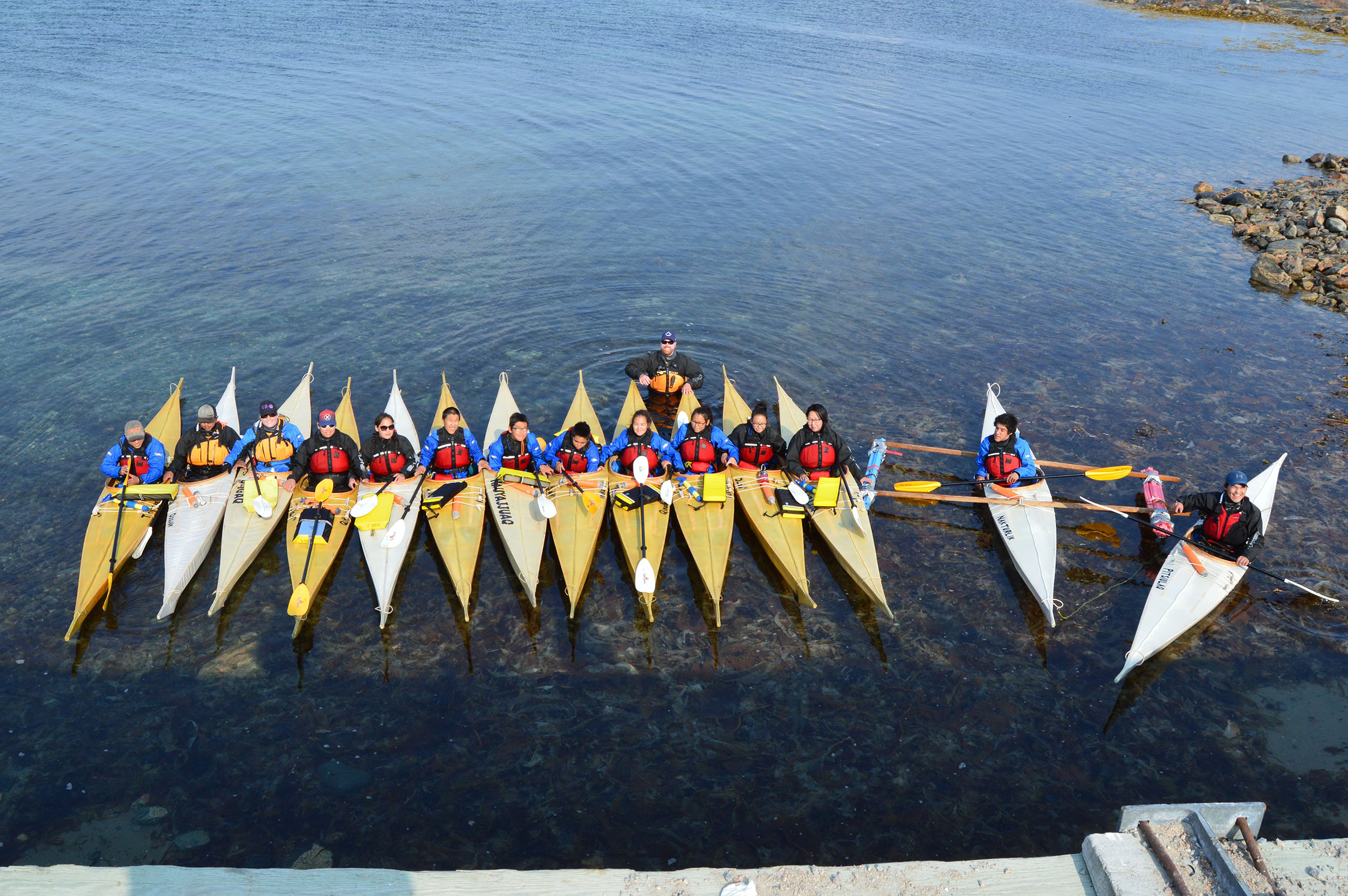
Chesterfield Inlet, Nunavut has a rich qajaqing history, though it has not been mobilized in several generations. In the early 2000s a local teacher, Glen Brocklebank, began to research the traditional use of qajaqs in Inuit life, looking for ways to revitalize this valued tradition for his students. With some initial government funding, he and a team of students successfully built nine qajaqs in ten days as part of a school project. This trial project was a success and additional funding was secured to acquire gear that would enable the students to put the qajaqs in the water so they could learn boating and water safety skills.
The Qajaq Program was developed to connect young people with local knowledge keepers and elders to learn how to build and paddle their own qajaqs. Through this program, the youth of Chesterfield Inlet build hand-crafted qajaqs based on the design that was used in the area hundreds of years earlier, and also create special qajaqs that can be shipped to other communities as a teaching resource.
The program is designed for students in grades 9-12 and engages them in the qajaq building process as well as teaching them water skills. Students are required to have good attendance at school, and for those who participate, attendance is almost perfect – they take it seriously and are proud of it! Younger students also come out to watch the activities, which sets up future interest in the program.
The benefits of the program are many. Young people are connected with elders who share their traditional knowledge. The students learn new skills, both in building qajaqs and in using them for sport and hunting activities. The water safety skills they learn have proven invaluable as they learn not to be afraid of water.
The Qajaq Program also helps build community by getting the broader community involved. The Hamlet Council has often gathered to watch the students build their qajaqs and watch them out on the water. The elders also watch the young people developing their skills on the water, and some participate themselves. Community members remark on how proud they are of the kids who have helped revitalize this valued tradition, and of the life lessons they are learning.